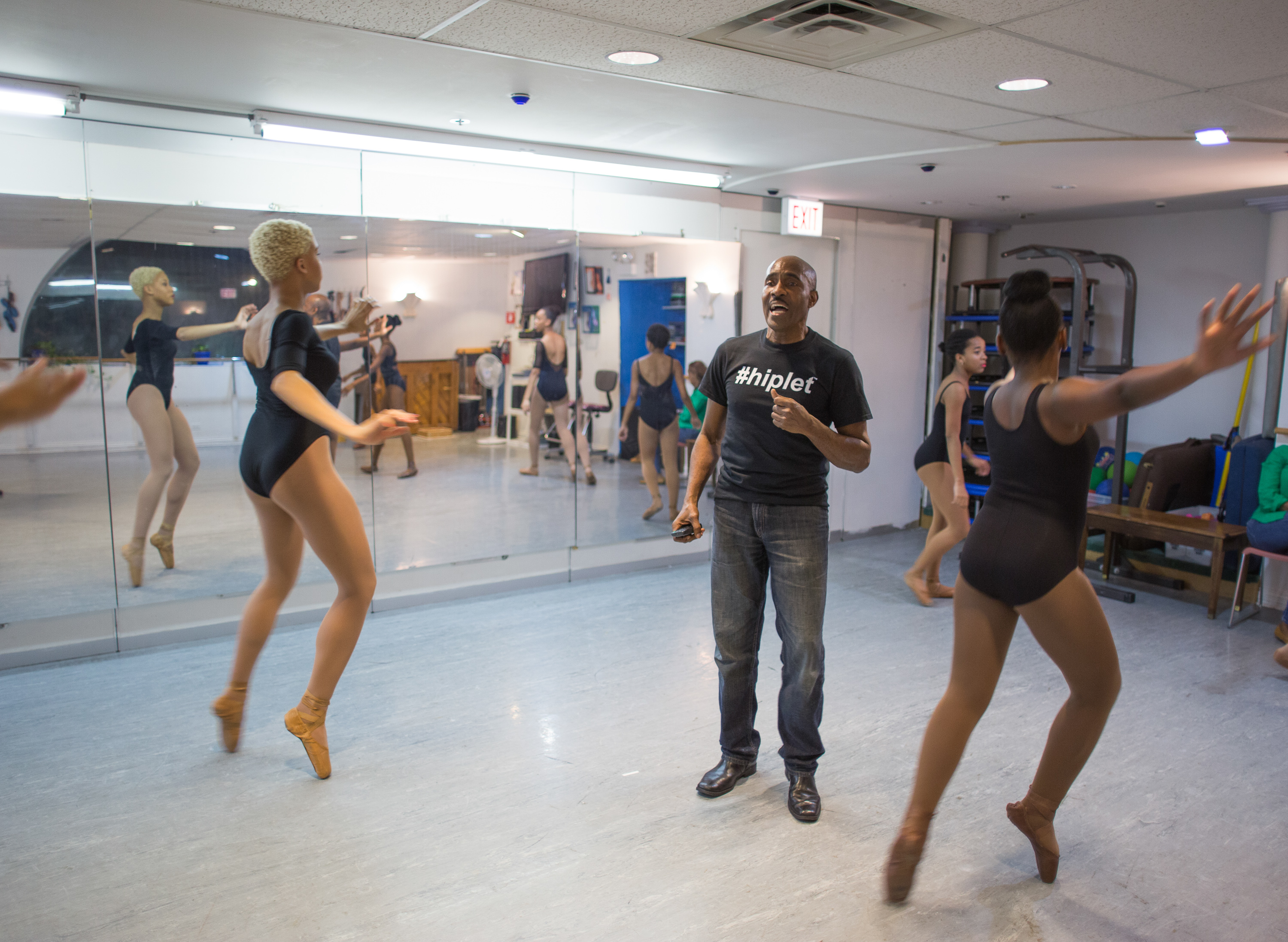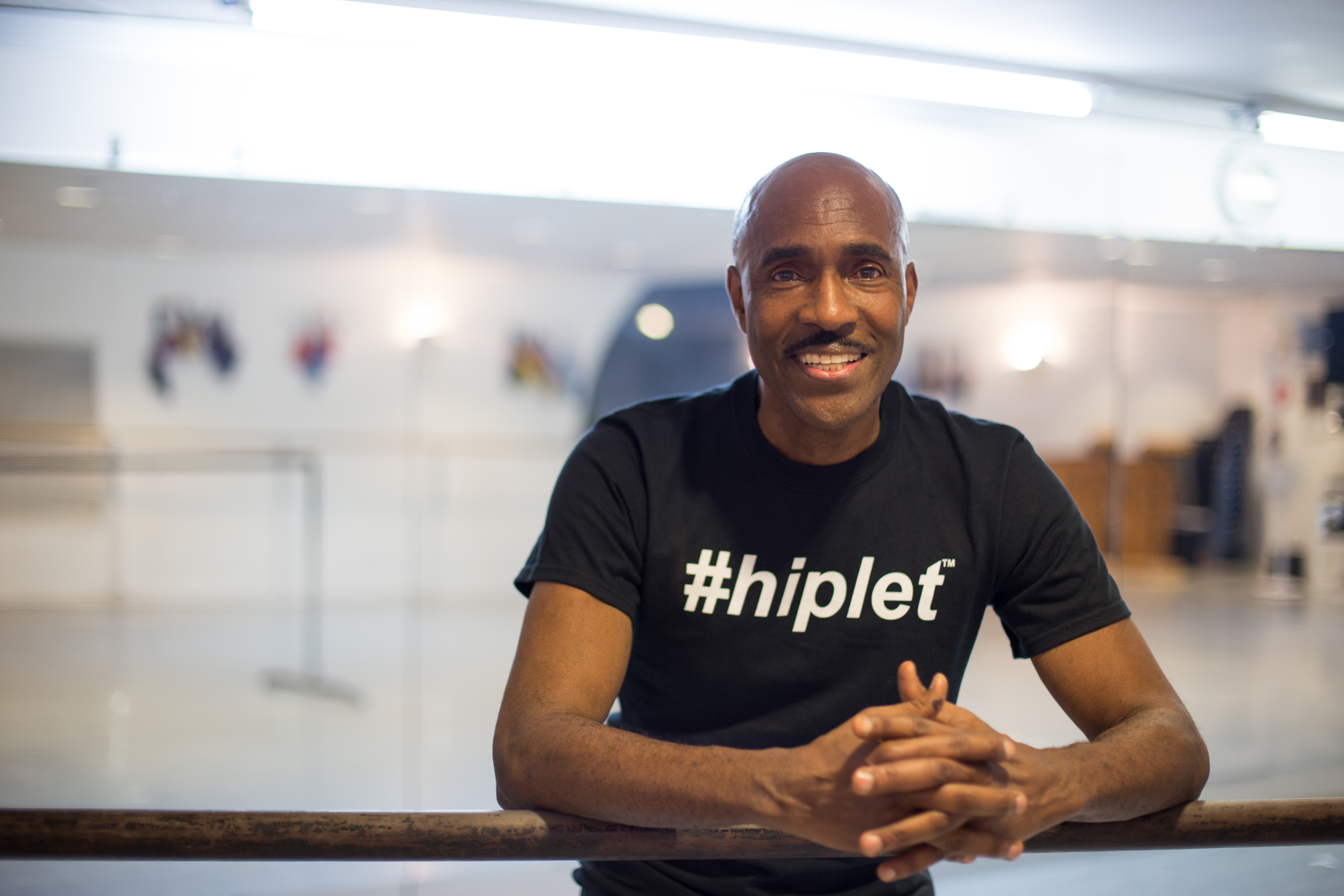Interview by Deanna Isaacs
Video and Photos by Scrappers Film Group
I was born in Saint Thomas, Virgin Islands. Going to Catholic school, and to the basketball court, a friend and I would stop and watch the girls in the dance-studio window. After a couple weeks, the teacher came out and said, “I’m going to call the police.” I said, “But I really want to dance.” She gave us some papers and said, “Have your parents fill these out.”
My mom was a single mom, and I have one brother and two sisters. She said, “You must be crazy, boy—we can’t afford dance lessons.” But my friend, his mother signed my paper. Two days later we were both there in dance class with the girls, having a great time.
This was tap and jazz. My teacher said, “You know what? You guys are really talented. You need to start studying some ballet.” It wasn’t until she passed away that I agreed. She had arranged for me to go up to Massachusetts to Jacob’s Pillow. And everybody there was into heavy ballet. These guys were jumping and spinning and doing all kinds of flying leaps, and I’m like, “Oh my God, this is what dance is all about.” I didn’t want to go back to Saint Thomas, because I had so much to learn. So my mama arranged for me to stay in Brooklyn with my cousins and an uncle.
In 1968, when Dr. King was assassinated, Arthur Mitchell decided to start the Dance Theatre of Harlem. In 1969, he took like ten dancers up to Jacob’s Pillow for a lecture–demonstration. I’m sweeping the stage at Jacob’s Pillow, and these beautiful black people step off the bus and come into the theater, and I’m like, “Who is this? I gotta be a part of this.”
I asked to take class that evening, and long story short, by the end of 1969, I was at Dance Theatre of Harlem on a scholarship. And that’s how my dance career took off. I was understudying everybody, and I got better at it, and before you know it I was a company member.
In 1978, I took a break, and did the Wiz movie with Michael Jackson and Diana Ross. I also did Timbuktu! on Broadway with Eartha Kitt. Then I came to the Drury Lane Water Tower, in Evolution of the Blues. We performed there for almost a year. During the day I would go over to Chicago City Ballet, and take classes with Maria Tallchief. When the show closed, I was invited to join her company. That would be the early 1980s, till 1984.
I got married in ’78, to Rhonda Sampson, a ballerina with Dance Theatre of Harlem. In 1981, our daughter was born, with cerebral palsy. Alexandra Victoria. They told us she would die at five years old. They were wrong; Alexandra lived to be almost 30. And she was a blessing. I learned so much from her. I used to bring her to ballet class, and she would sit in her wheelchair and move her fingers. And I would tell the students, “You see that? There’s a dancer inside of her.”
In 1990, I opened my own school. We’ve been in this building [Dearborn Station] for 26 years. I’m also the assistant artistic director for Giordano Dance Chicago. That’s my day job. I get to work with older people. Then at night, I come and work at my own school, with the children.
I started rap ballet back in 1994. We went around to Chicago public schools. It was classical ballet music, and the guys would come out and lift the girls, and spin them, and then the rap music would start. When rap changed to hip-hop, I just changed it to “the hip-hop rap ballet.” And in 2007, I got a trademark on the word “hiplet.”
 Over the years, I’ve sent dancers I trained to Cirque du Soleil, Alvin Ailey—all over the place. But right now, social media has propelled us into another dimension. The kids put me on Instagram, and I started posting little things, and then the Só Bailarinos in Brazil started posting some of our stuff. It was a big controversy over there, and it went to eight million views. That was maybe last April or May. And then BuzzFeed picked it up and called us, Huffington Post came in and shot the kids, and Good Morning America called. It’s almost 100 million views right now. We got a call from Mercedes-Benz. They flew us to Germany; we shot a commercial at the Mercedes-Benz museum in Stuttgart. And then we went to New York for Vogue magazine. And out to San Francisco—did a TED Talk. The phone has not stopped ringing.
Over the years, I’ve sent dancers I trained to Cirque du Soleil, Alvin Ailey—all over the place. But right now, social media has propelled us into another dimension. The kids put me on Instagram, and I started posting little things, and then the Só Bailarinos in Brazil started posting some of our stuff. It was a big controversy over there, and it went to eight million views. That was maybe last April or May. And then BuzzFeed picked it up and called us, Huffington Post came in and shot the kids, and Good Morning America called. It’s almost 100 million views right now. We got a call from Mercedes-Benz. They flew us to Germany; we shot a commercial at the Mercedes-Benz museum in Stuttgart. And then we went to New York for Vogue magazine. And out to San Francisco—did a TED Talk. The phone has not stopped ringing.
But these kids are 12 to 18, and I keep pulling them out of school. That’s a problem. We’re turning down a lot of stuff. The world is calling, and everybody’s on hold. I need money to start a company. I would really love to be able to hire ten dancers, or even seven, right now.
Of course, we have our critics. Anything new, people are going to be upset by it. I tell people this is edutainment. It opens a place where kids of color can come and study this art form, knowing that they have to train in classical ballet, five, six times a week.
My mom passed away in 2006; my wife passed away in 2008; my daughter passed away in 2010. I am married to my school and these kids. v

![[photo of maria gaspar]](https://people.chicagoreader.com/wp-content/uploads/2016/12/Maria-Gaspar-20-1-150x150.jpg)
![[photo of ada grey]](https://people.chicagoreader.com/wp-content/uploads/2016/12/Ada_Grey-1-150x150.jpg)
